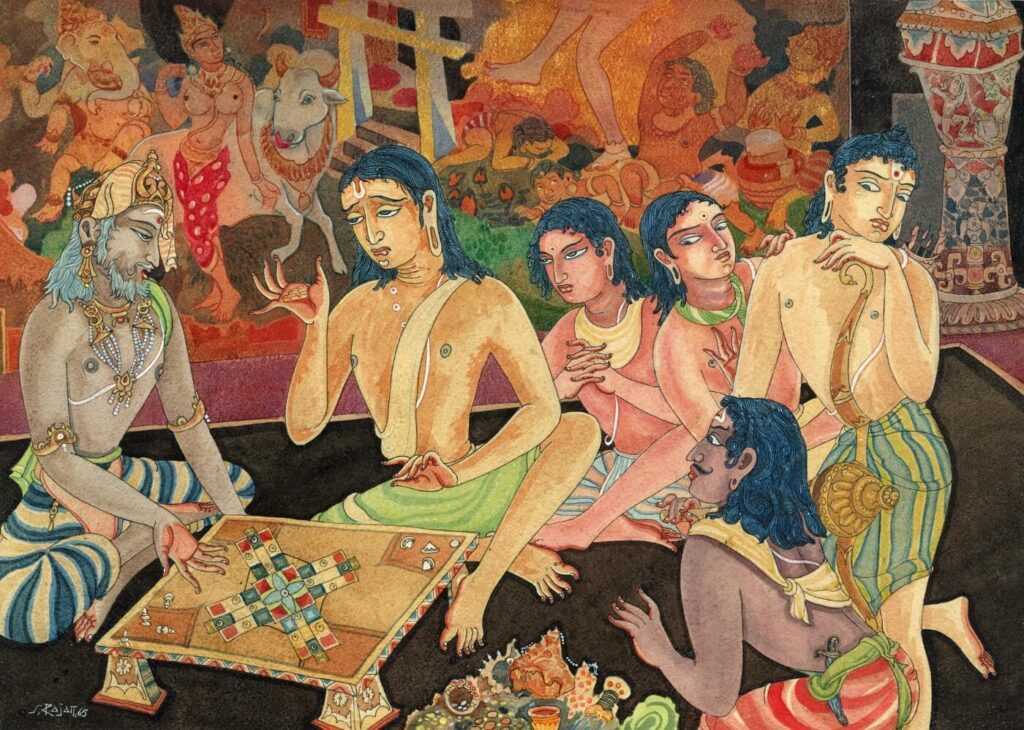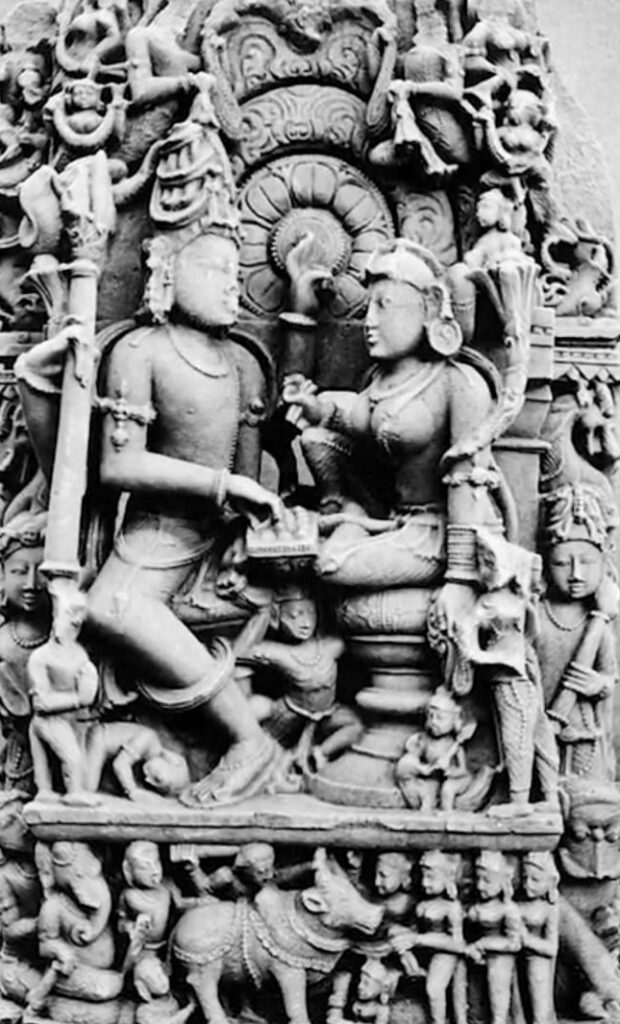Chaupar
Chaupar, an antecedent to Ludo, was a common gambling sport in Akbar’s Fatehpur Sikri court. Also depicted in the Dhumar Lena Cave of Ellora, Chaupar played a crucial role in the Mahabharata, leading to the destructive Kurukshetra War.

Art By : S. Rajam
Derived from the word ‘caupara,’ meaning ‘that which is composed of four boards,’ Chaupar was usually played between 2-4 people on a board shaped like a cross, cruciform board. Each player had to throw six or seven cowrie shells or wooden pawns, and move pieces on the board until someone got all their pieces in the finish zone.
The earliest visual reference of Chaupar is a relief in the Dhumar Lena Cave of Ellora, Cave Number 29, built around 8th centuries CE, where one wall of the cave is sculpted with figures of Shiva and Parvati, shown enjoying a game of Chaupar. In Mahabharata, one of the greatest epics in the Hindu Mythology, Chaupar becomes the turning point when Yudhisthira loses everything at the game and it eventually leads to the most destructive Kurukshetra War.

Image Courtesy: The Print
The first description of any of these games seems to have been written in the 16th century, when
chaupar was a common gambling sport at the court of the Mughal emperor Akbar in Agra and Fatehpur Sikri. The emperor himself was an addict and in the courtyard of his palace at Fatehpur Sikri he had laid out in flagstones a huge “board” where he and his courtiers enjoyed the game, using slaves as the playing pieces. How much older than Akbar the game is, it is not possible to say, but Abul Fazl, vizier and historian of Akbar, remarks of chaupar, “From times of old, the people of Hindustan have been fond of this game,” but adds no further information about dating.

Image Courtesy: Sahapepedia
Chaupar was a treasured game played by aristocrats as well as the common man. The Chaupar court of Fatehpur Sikri is believed to be the life-sized version of this game where Emperor Akbar routinely played it, dividing the court itself into a large Pachisi board, with palace staff taking the place of the coloured pieces.
